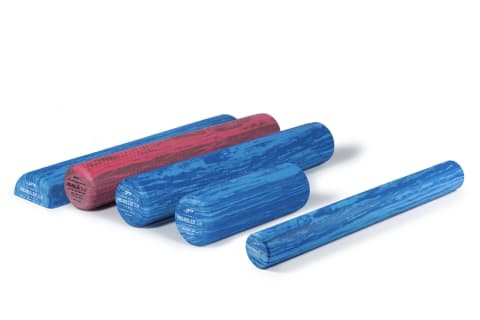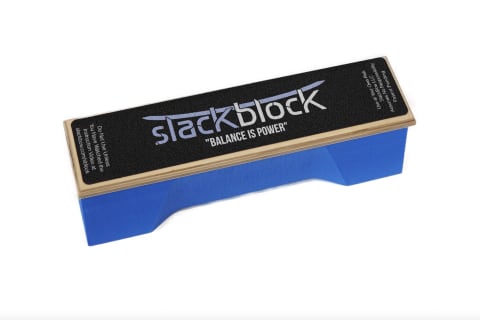Advertisement
The Future Of Movement Is Looking A Lot More Functional In 2024



How’s your grip strength? Can you get off the floor without using your hands? If you haven’t asked yourself these questions yet, you certainly will in the year ahead.
As we predicted last year, more people are starting to lift heavier weights in the name of longevity. And as we’ve prioritized strength for life, questions of functional strength and mobility have come into play. In 2024, we’re predicting more emphasis will be placed on mobility exercises that improve range of motion, eliminate pain, promote joint health, and reverse the effects of a sedentary lifestyle.
Meet the experts
Leada Malek, DPT
Leada Malek, DPT is a licensed physical therapist and board-certified sports specialist located in the San Francisco Bay Area. She uses a combined approach of manual therapy and specific therapeutic exercise to help her patients move better and perform better.
Kelly Starrett, DPT
Kelly Starrett, DPT is a physical therapist who works at the intersection of mobility, movement, and human performance. Over the past decade, Kelly has spent more than 150,000 hours training athletes of all types.
Juliet Starrett
Juliet Wiscombe Starrett is a former whitewater rafting world champion, entrepreneur, bestselling author, athlete, and podcaster.
Why strength & mobility matter for living well, longer
Living to 100 is now a truly attainable goal—we just need to make sure our bodies can keep up. According to the latest research, maintaining functional strength and mobility is arguably the best way to ensure you get there with a better quality of life (and with minimal pain, at that).
One recent study1 on arm and leg limb strength, for instance, found that both upper and lower limb weakness are associated with a higher risk of death. The study authors concluded, therefore, that limb strength could be considered an “easy-to-perform potential mortality predictor.”
In another recent review2, researchers concluded that physicians and physical therapists should even be screening for things like physical inactivity, lack of resistance training, and mobility risks as their patients age (and recommending fitness regimens where necessary).
Longevity-focused doctor and author of Outlive: The Science & Art of Longevity, Peter Attia, M.D., echoed this idea on a recent episode of the mindbodygreen podcast, noting, “If you look at all of the metrics that are associated with longevity, there are none that even come within the same zip code as having a very high cardiorespiratory fitness measured by VO2 max, having high muscle mass, and having high strength.”
He goes on to say that even despite all the different health hazards people face, such as having high blood pressure or smoking, “The benefit of high fitness, high muscle mass, and high strength is higher in magnitude,” adding, “You can't help but come to the conclusion that this is the single most important thing we need to do.”
So whether it’s measured via your grip strength, your walking speed, or how well you can do a squat, the point is, your mobility is a strong predictor of longevity.
And according to physical therapist, Leada Malek DPT, who recently authored Science of Stretch: Reach Your Flexible Potential, Stay Active, Maximize Mobility, “You can see how mobility plays a role in passing these tests, to a degree,” adding that while there are natural changes in body composition and muscle mass that occur as we age, the good news is, “skeletal muscle retains the ability to adapt, which means you can still build strength, muscle mass, and even train mobility [as you get older].”
What makes an exercise functional or mobility-focused?
Before we dive into how the mobility game is changing in the year ahead, now’s probably a good time to talk about what “mobility” actually means in this context.
As co-authors of the new book, Built To Move: The Ten Essential Habits to Help You Move Freely and Live Fully, physical therapist Kelly Starrett, DPT, and world champion athlete Juliet Starrett, tell mindbodygreen, the definition is constantly changing. When Kelly co-authored his first fitness book over ten years ago, mobility was thought of as the ability to “access your native physiologic range of motion and have control in that range,” they explain.
Now, they say, mobility training has gone one step further. For the Starretts, mobility encompasses being able to do what you want to do with your body, and namely, moving through your environment the way you want in a pain-free way.
“If you are using an exercise to target mobility,” Malek adds, “you may be focused on a particular joint alone or its neighboring joints, the surrounding muscles and tissues, often with the intent of increasing or mastering the range of motion.”
When we’re thinking about mobility for longevity, however, Malek notes that it becomes more about being able to do day-to-day tasks independently, such as getting dressed, getting up off the floor while playing with a grandchild, getting in and out of the car, or taking a walk.
How functional mobility training will change the fitness scene in the year ahead
From the launch of Peloton’s mobility series to Alo Moves’ collection of mobility videos, more and more fitness brands are leaning into functional mobility, offering courses and videos for increasing the range of motion in the joints.
Considering the stats on chiropractic visits have doubled in the past 15-20 years, it’s clear people are also becoming more aware of how they feel in their bodies and seeking relief. Even the hashtag #mobility on TikTok has garnered over 3.3 billion views, with users all around the world creating videos for various mobility challenges involving pistol squats, pull-ups, and hip-opening stretches.
And according to Malek, the increase in mobility-focused content is just one piece of evidence that longevity-focused mobility is more than just a trend. “People are starting to appreciate how much their bodies are capable of, with an awareness for more lifestyle-focused exercise.” Fitness is trending more towards health benefits and function rather than solely aesthetic gains.
People are starting to appreciate how much their bodies are capable of, with an awareness for more lifestyle-focused exercise
According to Google trends, searches for “mobility” over the past five years have increased roughly 20%, demonstrating that more people are looking to hone their mobility in the name of longevity. More specifically, views on YouTube videos for mobility were few and far between back in 2018, but in the past year, they peaked at the highest they’ve ever been.
And for what it’s worth, feeling strong and supported in your body has benefits outside of increasing your lifespan. As the Starretts explain, mobility isn’t about wrecking yourself for two hours at the gym once a week, or getting a massage once a month; It’s about infusing more movement into your everyday life.
“It’s just not enough exposure, and we need this daily input,” they say about a typical American lifestyle, adding, “We fail to appreciate that a lot of these systems and functions need to be worked into our daily behaviors and how we’re interacting in the current environment.”
Shop mobility gear
When we think about the Blue Zones (the areas of the world where people tend to live the longest), for instance, there’s always a lot of emphasis on the food they eat, but we often forget the people living in longevity hotspots are always on the move.
Are they all triathletes who spend three hours in the gym a day? Probably not. But they are out and about in their neighborhoods, the Starretts note. They’re gardening, they’re walking around their communities, and their lifestyles are active and mobile without necessarily being overly fitness-focused. Essentially, they're using their joints through more full ranges of motion than someone with a sedentary lifestyle.
Attia echos this, telling mindbodygreen he wants to see more people focusing on the major aspects of well-being, instead of the minor—and mobility is definitely major. “A lot of people are not taking advantage of the things we have right in front of us, [so] I’d like to see more of that. People are so worried about this phytonutrient, or this tea versus that tea, and they’re getting lost in the wrong details,” he explains.
In short, the Starretts say, the recent emphasis on mobility is here to stay. “There's a real opportunity here to help people enrich their lives. Through physical practice, [we can] expand people's understanding of how their bodies work, outside of juice cleanses and smashing themselves at the gym.”
Forecasting the future
Whether you’re a diehard CrossFit fan or a spinning superstar, without functional mobility, you’re missing a big piece of the puzzle. The good news is, as more people focus their workouts (and lifestyles) on improving how they feel and move—not just how they look—mobility will take center stage.
Because a healthy body is about so much more than washboard abs and ripped biceps: It’s about functioning your best while doing everyday activities—whether you’re 25 or 85.
We all want to feel good in our bodies, and so much of that starts with nurturing our joints, strengthening the muscles surrounding those joints, and increasing our range of motion. And in 2024, that’s exactly what we can expect to see online, at the gym, and at home.


